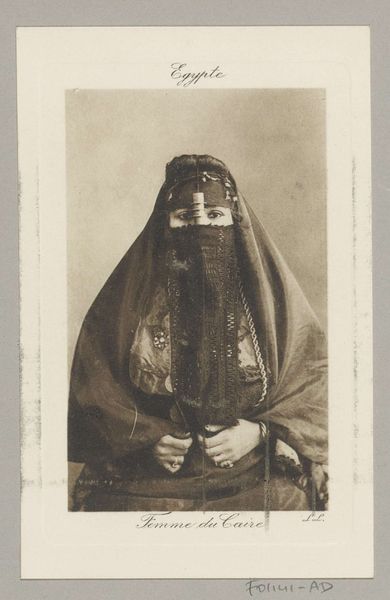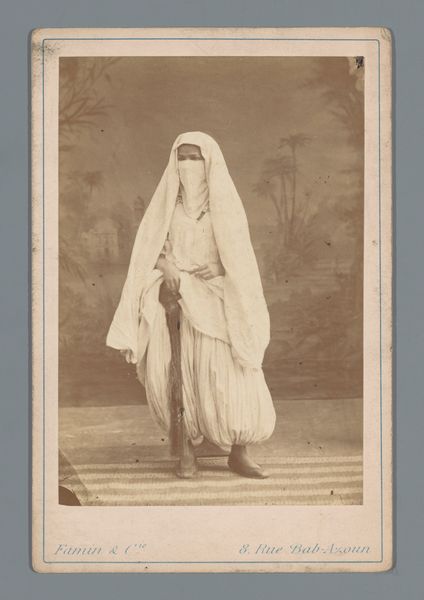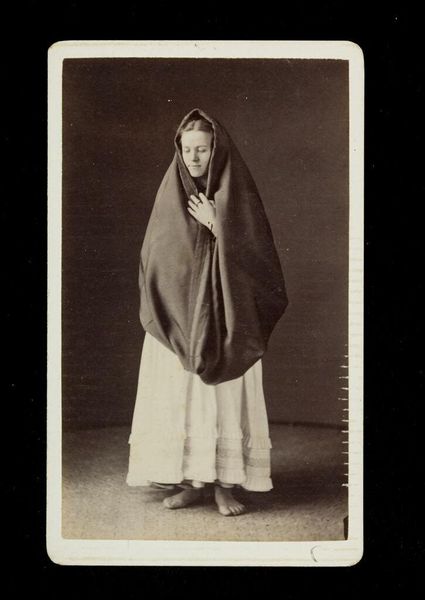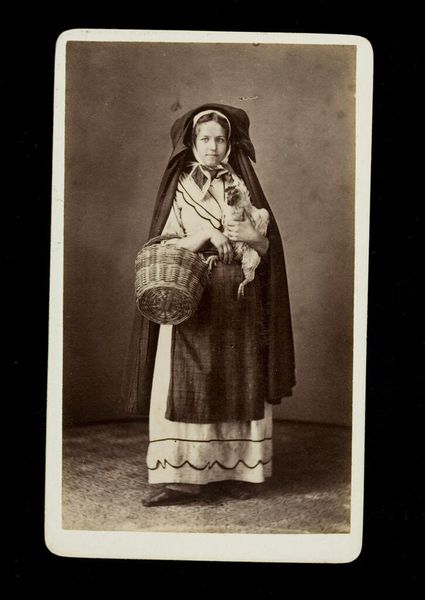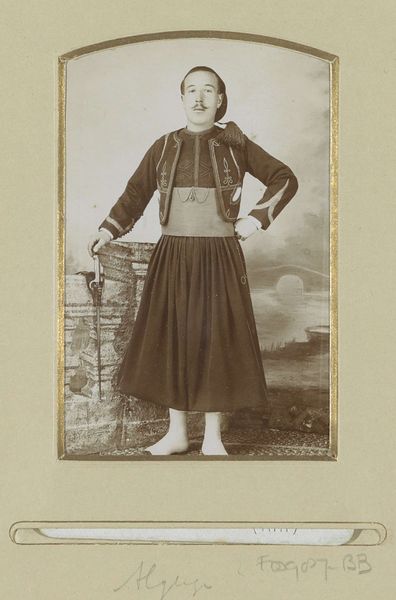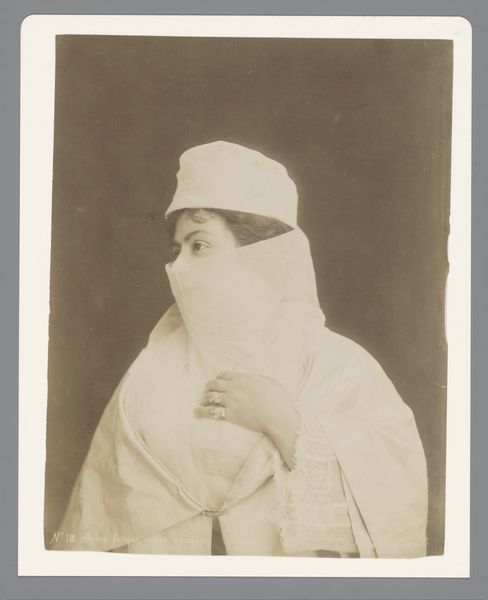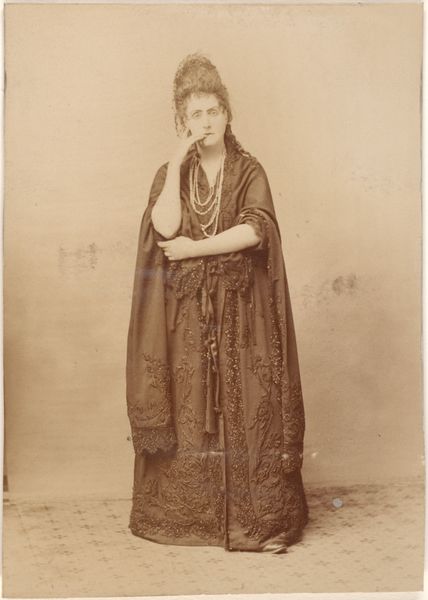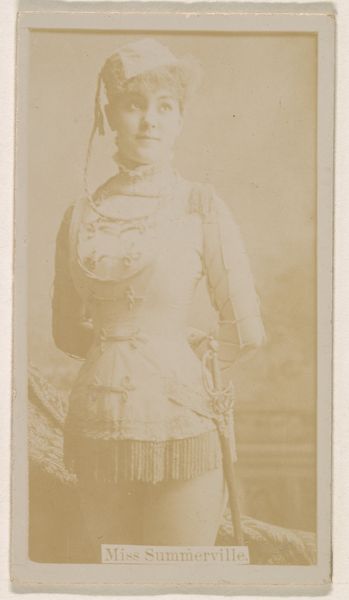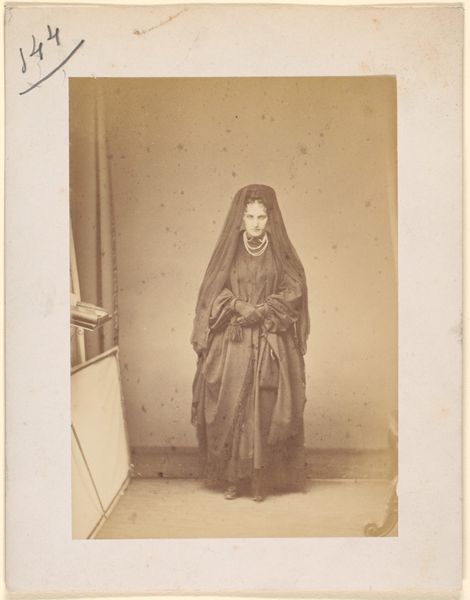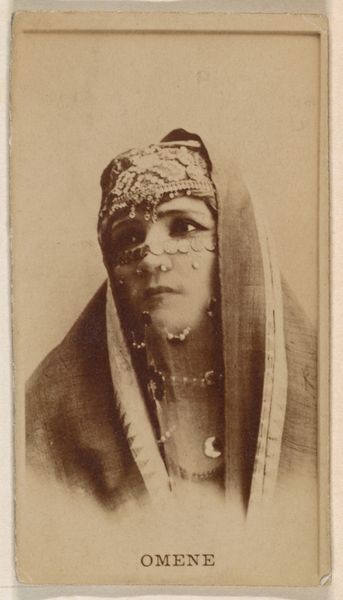
print, photography
#
portrait
# print
#
photography
#
orientalism
Dimensions: height 139 mm, width 90 mm
Copyright: Rijks Museum: Open Domain
Curator: Here we have "Portret van een gesluierde Turkse vrouw," or "Portrait of a veiled Turkish woman," an early photographic print, dating from before 1914. Editor: The photograph is immediately striking. The texture of her layered garments against the smooth, blank veil draws the eye. The image is soft, evocative. What do you make of it? Curator: Formally, the image is composed in a way that guides the eye upwards, beginning with the detailed pleats of her skirt, progressing through the lace trim, and culminating in the window to her face—her captivating eyes. There's a distinct use of chiaroscuro; note the soft gradations. Editor: This portrait offers a glimpse into the colonial gaze prevalent in the early 20th century, reflecting the "Orientalist" style, framing the woman in ways that reinforce exotic and often romanticized perceptions of non-Western cultures. The title, with its inscription of 'Egypte' above, is a critical clue about this context. Curator: Indeed, the label introduces layers of understanding. The semiotic relationship here suggests exoticism—her form constrained, and only the windows to her soul revealed. This highlights photography’s capacity to arrest its subject in time, creating a frozen encounter between the viewed and the viewer. Editor: Yes, there's that implied power dynamic between photographer and subject, between colonizer and colonized. Was this image commissioned? For what purpose? These questions point to the social hierarchies inherent in the act of representation. But also consider the woman herself; does she perform agency through the gaze? Or does she invite the observer? Curator: Fascinating questions to pose. What intrigues me further is the tonality: the limited contrast evokes a sense of melancholy. One wonders, technically speaking, what development methods were employed. Editor: This work exemplifies how photography was harnessed as a tool for documenting—and perhaps creating—difference, fueling a specific narrative. It reminds us to approach historical images not just as records but as constructed narratives. Curator: I will think of these insights next time I encounter photography of this period. Editor: Indeed. I'll think about what formalism can still lend to historic context and cultural frameworks.
Comments
No comments
Be the first to comment and join the conversation on the ultimate creative platform.
